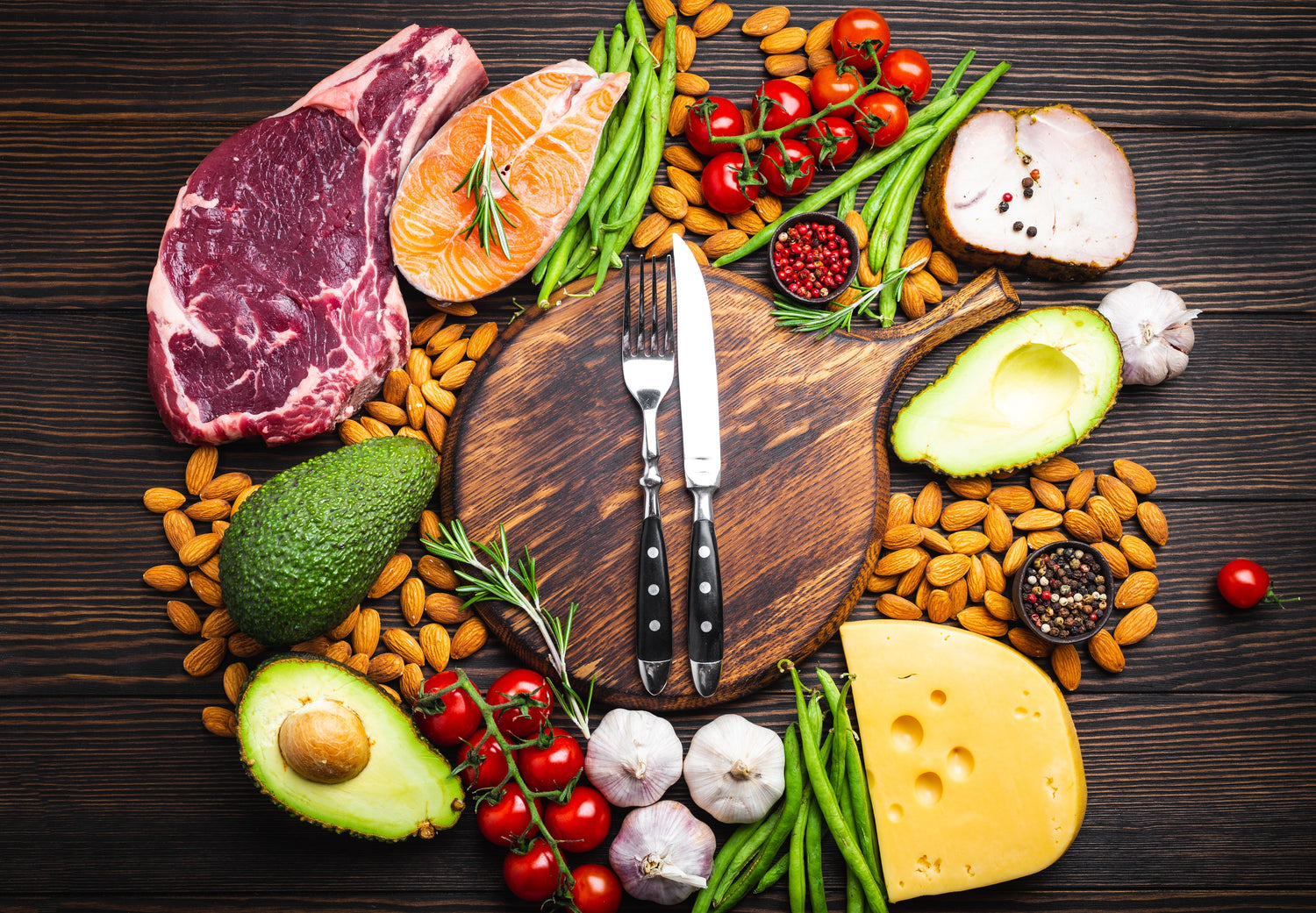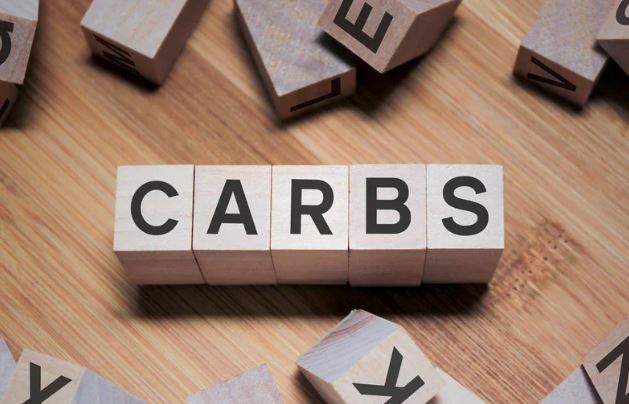Keto-what? Many people struggle to distinguish the ketogenic diet from other nutritional strategies because they simply feel it's another label without understanding the possible underlying mechanisms.
The key differentiator here is nutritional ketosis. Ketosis is a perfectly natural metabolic state of the body in which you predominantly burn stored body fat for fuel instead of glucose . Let's discuss how you get into ketosis and what the benefits are.
Table of Contents:
-Ketones
-The benefits
-The Ketogenic Diet
-Exogenous ketones
-How to test for ketosis
-How to use ketosis
-Considerations
Most of us have been told that our body's primary source of energy is glucose, and that it needs to be fed a steady supply of carbohydrates regularly throughout the day. However, there is a more efficient fuel source that is underutilized by most: ketones.
In the absence of standard glucose availability, the body metabolizes fat for energy and produces ketones, which are then used by your cells to fuel their work.
By definition, nutritional ketosis is the metabolic state of having ketones in the blood, usually above 0.5 mmol/L . The whole concept of the ketogenic diet is to eat a diet that promotes lower glucose availability to bring your body into ketosis.
We believe our ancestors had infrequent eating times and were subject to unintentional bouts of intermittent fasting that primarily saw the body in a ketogenic state. Nutritionally, this means eating enough protein, fewer carbohydrates most of the time, and higher amounts of healthy fats.
Research has been and is continually being conducted to unravel the mechanisms and potential applications of a ketogenic diet. From now on, the main reasons why people opted for this lifestyle are to improve body composition, increase mental performance, increase exercise and athletic performance, improve mood, and prevent and treat diseases.
ketones
Ketone Categories: 3 types are produced when the body enters ketosis.
- Acetoacetate (AcAc) : the first created from the decomposition of fatty acids, converted into BHB or acetone.
- Beta-hydroxybutyrate (BHB) – Created from acetoacetate, although technically not a ketone due to its structure, it is still identified as one.
- Acetone : A byproduct of acetoacetate, it breaks down rapidly and is eliminated from the body through the excretory systems or in respiration.
Why the body uses ketones
Humans have always relied on ketones for energy in the absence of glucose or when glucose is scarce, as we mentioned earlier. An example of this would be our ancestors having fewer carbohydrate options during the winter. Humans are actually brought into this world at birth in a state of ketosis.
The reality is that modern food availability, conventional nutrition advice, and more all see more carbohydrate abundance than is necessary for the average person. This means that most people rarely enter ketosis, and the metabolic pathway becomes a road less traveled. The aforementioned periods of time where carbohydrates are less abundant, as well as periods of unplanned fasting and time availability, saw humans in states of nutritional ketosis. Because of this, our bodies are amazing at adapting to the ketogenic state.
Benefits of ketosis
While health and nutrition aren't a one-size-fits-all approach, the benefits many are experiencing and can expect from nutritional ketosis are as follows:
-Better Body Composition
-Improved mental focus and energy
-High level of physical fitness and athletic performance
-Improved mood and decreased anxiety
-Improved insulin sensitivity and blood sugar health
-Abundant energy
A large number of specific benefits
-Increased fat burning: In ketosis, you burn dietary fat and your own body fat as your primary fuel.
- Appetite and craving regulation: Better regulation of satiety and blood sugar, as well as potential ghrelin balance, means you can be more in tune with true hunger versus cravings. The high protein, fiber, and fat content will boost satiety.
-Blood sugar balance: Many people eat in a way that includes blood sugar spikes that can leave them feeling exhausted, unfocused, and craving food again soon after eating. Ketosis has the opposite effect. Additionally, eating quality protein, vegetables, and fats also helps this process.
-Hormone calibration: Ketosis helps promote the regularity of hormones that affect weight. This is another driver of how ketosis can help you avoid addictive junk food cravings.
Cognitive benefits
A poorly designed or uncontrolled diet can lead to mental confusion, decreased mental acuity, and difficulty concentrating. Many report feelings of being overreactive and less clear with a poor diet.
Ketones help maintain high-octane energy levels in mitochondria, which in turn produce energy for cells in the body and brain. Ketones also helped improve energy efficiency by providing the body with more energy units, also known as ATP.
The higher content of healthy fats also supports the health of our brain because the brain is our fattiest organ, composed of more than 60% fat. Research also shows that the brain prefers fat as fuel predominantly over glucose.
Benefits of training and exercise
-Fat adaptation can help with endurance by providing the body with the primary fuel system it needs to maintain performance. Your body will use oxygen more optimally and efficiently.
- Adapting to fat also allows the body to retain more muscle glycogen to be used during more appropriate rest periods during training rather than immediately depleting it.
-Spending regular time in ketosis helps improve mitochondrial function. This means you're fueling your body's energy batteries to optimize your overall health and long-term physical performance.
-Better blood glucose balance means fewer ups and downs and less performance.
-Better energy availability to avoid shocks when exercising.
Exogenous ketones
While we've expanded our guides and articles on exogenous ketones, please note that they are a supplement used to improve health, performance, and energy delivery. They are often used as a supplement to support a low-carb diet, although they can be taken with any nutritional program to support a lifestyle. They provide your body with ketones that your body can use as fuel that it does not directly produce itself. In fact, the body cannot tell the difference.
Common uses for exogenous ketones:
-Helps in the process of adapting to ketosis by helping to mitigate the symptoms of keto flu.
- Clean energy without adrenal stress and caffeine at any time of day.
-Promote satiety and suppression of desire.
-A decrease in inflammation.
-Reduces anxiety and improves mood.
-Provide cognitive clarity and increased mental performance.
Additional benefits
-By flooding your body with higher levels of ketones, you can maximize the benefits of ketosis.
-Ketones enhance the body's energy systems and provide direct energy to brain cells.
-Optimizing your ketone content will help support a foundation for overall health, wellness, disease prevention, and longevity.
Where to start with exogenous ketones
Try taking a morning supplement first thing or after breakfast to kick-start your day.
Depending on your needs and other variables, consider having a second serving in the afternoon.
Needs: Why, when and where to take exogenous ketones
-In the morning to kick-start your energy for the day.
-Pre-workout is a powerful natural energy and performance booster.
-Between a long interval of meals during the day while adapting to ketosis.
-During a power act later on day 2, it rewires your mental performance and makes you sharper than a tack. If you tolerate caffeine well or perhaps love your morning coffee, you can use creamier versions to boost your drink.
-After eating a meal that takes you out of ketosis if you have those initial side effects and symptoms of that first carb refeed.
-If you need energy later in the day and still want to be able to go to sleep on time.
The ketogenic diet
A ketogenic diet is an approach to eating that is high in fat (~70%), moderate in protein (~20-25%), and low in carbohydrates (~5-10%). These ratios were designed to mimic the effects of fasting to induce nutritional ketosis in the body. However, it's not just about proportion: you need quality food! It is important to remember that these ratios were designed for medical use and to induce the highest degree of ketosis. That doesn't mean everyone has to be in such a strict ratio. What's more important than being perfectly in ketosis all the time for the vast majority is becoming fat-adapted and spending a lot of time in some spectrum of ketosis. Exogenous ketones can help optimize ketone levels so that people don't have to also follow a strict ketogenic diet.
Carbohydrate consumption
Conventional wisdom has a range of approximately 25 to 50 grams of carbohydrates per day for those following the ketogenic diet. You'll remember that there is some leeway here if you're consuming exogenous ketones, and also depending on your own training style and unique body.
Fat consumption
Most of your calories on a ketogenic diet come from fat. Fat is considered the dominant macronutrient for a ketogenic diet. Because fats are stored in your cells for energy and because of the usual nutritional considerations with any food, it's critical to get high-quality, healthy fats.
Many also find that after the initial transition phase, they tend to reduce their fat intake and increase their protein intake.
Protein level
The standard recommendation is generally 0.7-0.8 g of protein per pound of lean body mass. The reality is that you may have higher amounts of protein than commonly recommended in the ketogenic diet. Remember that this lower protein threshold was created as a ratio for medical applications in children, and that those who lead active lifestyles and athletes generally need more protein and can still enjoy the benefits of ketosis.
The idea that excess protein increases glucose levels and decreases ketone levels is, for the most part, incorrect, although there are ways to eat protein in such a way that it increases blood sugar, such as taking whey protein alone.
The bottom line here is that these are guidelines, and because of their initial reason for creation, they are flexible. It is important to find a ratio that best suits you.
Types of ketogenic diets
The following are the most common variations of the ketogenic diet:
-SKD: Standard Ketogenic Diet: ketogenic diet with the original portions of macronutrients.
-CKD: Cyclical Ketogenic Diet - Regular carbohydrate research sessions that are supported by prolonged periods of low-carb eating that resemble a standard ketogenic diet.
-TKD: Targeted Ketogenic Diet: Small amounts of carbohydrates are added around exercise to optimize training performance and muscle growth
-There is also an unnamed version of a ketogenic diet that sees users consume higher amounts of protein depending on their unique needs.
How to test for ketosis:
Many find that testing their ketone levels helps them stay accountable and understand how their adaptation process is going. However, we don't recommend doing this excessively forever because it can create an effect where you focus on minors and focus exclusively on ketone levels instead of looking at other indicators of optimal health and fitness.
Methods for measuring ketone levels are as follows:
- Urine analysis: While this is the most common way to perform the test, we do not necessarily recommend it. This is only part of the picture and the truth is that if your body is using ketones and your energy balance is such, you probably won't have excess ketones in your urine.
You can easily do this at home by urinating on urine strips. The easy setup and cost-effectiveness of this make it a favorite, though not the most accurate.
- Blood test: You can pick up a home unit 2 to test your blood by pricking your finger with a test stick to measure the amount of a certain ketone called BHB. This is considered the most accurate way to assess your body's ketone levels, although it is also the most expensive and somewhat invasive.
- Breathalyser: The respiratory quotient test helps us measure a type of ketone in the breath known as acetone. This is quite unreliable, although it may give some an indicator of where they are.
Interpretation of results: If your ketone levels are between 0.5 and 3.0 mmol, you are in some spectrum of ketosis.
From theory to practice: applications of ketosis
Ketosis has been shown to help directly or indirectly with the following:
Weight loss
Athletic performance and fitness
Focus and mental cognition
Sustainable energy
Muscle development
Hormonal Regulation
Longevity
Blood sugar rhythms
Epilepsy
Cancer
Depression
anxiety and stress
Inflammation
Migraines
Alzheimer's and neurodegenerative disease
Please understand that this and all information on the sky is not intended to be a substitute for medical advice from a qualified health professional. We recommend consulting with a qualified healthcare professional before making any changes to your health regimen.
Ketogenic Considerations
Dehydration: Nutritional ketosis comes with less glycogen, which means you'll have less hydration. Remember it's in the name carbo-HYDRATE! Additionally, eating quality foods in general reduces inflammation. While losing this water retention is generally a good thing, it doesn't distinguish between essential good hydration and unwanted chronic inflammation. Ketosis also reduces insulin levels which allows for fluid release because insulin prevents sodium excretion.
What this means is that you will want to supplement with electrolytes or perhaps an exogenous ketone supplement that already has electrolytes built in.
Possible side effects during the initial phase of ketosis adaptation may include:
-Headache
-Fatigue
-Bad mood
-Stomach and digestive problems
-Nausea
-Poor mental cognition
-Decreased physical performance
Solutions
-Eat the right proportions of foods from the right sources to get enough energy and the right nutrients.
-Time: Give your body a chance to adapt.
-Make sure you stay on top of your sleep.
-Drink a large volume of good quality water.
-Add natural salt and electrolytes.
-Supplement with exogenous ketones.





